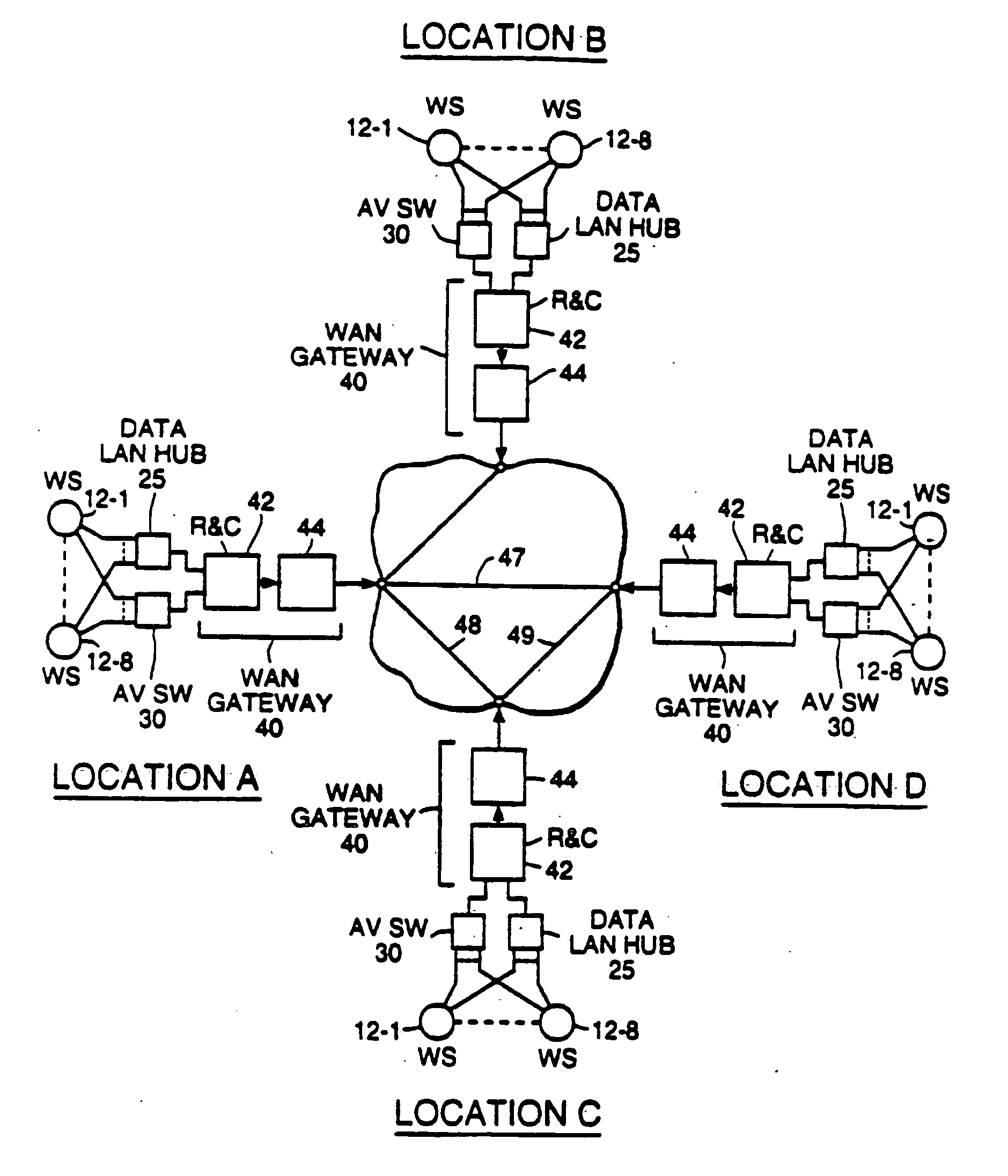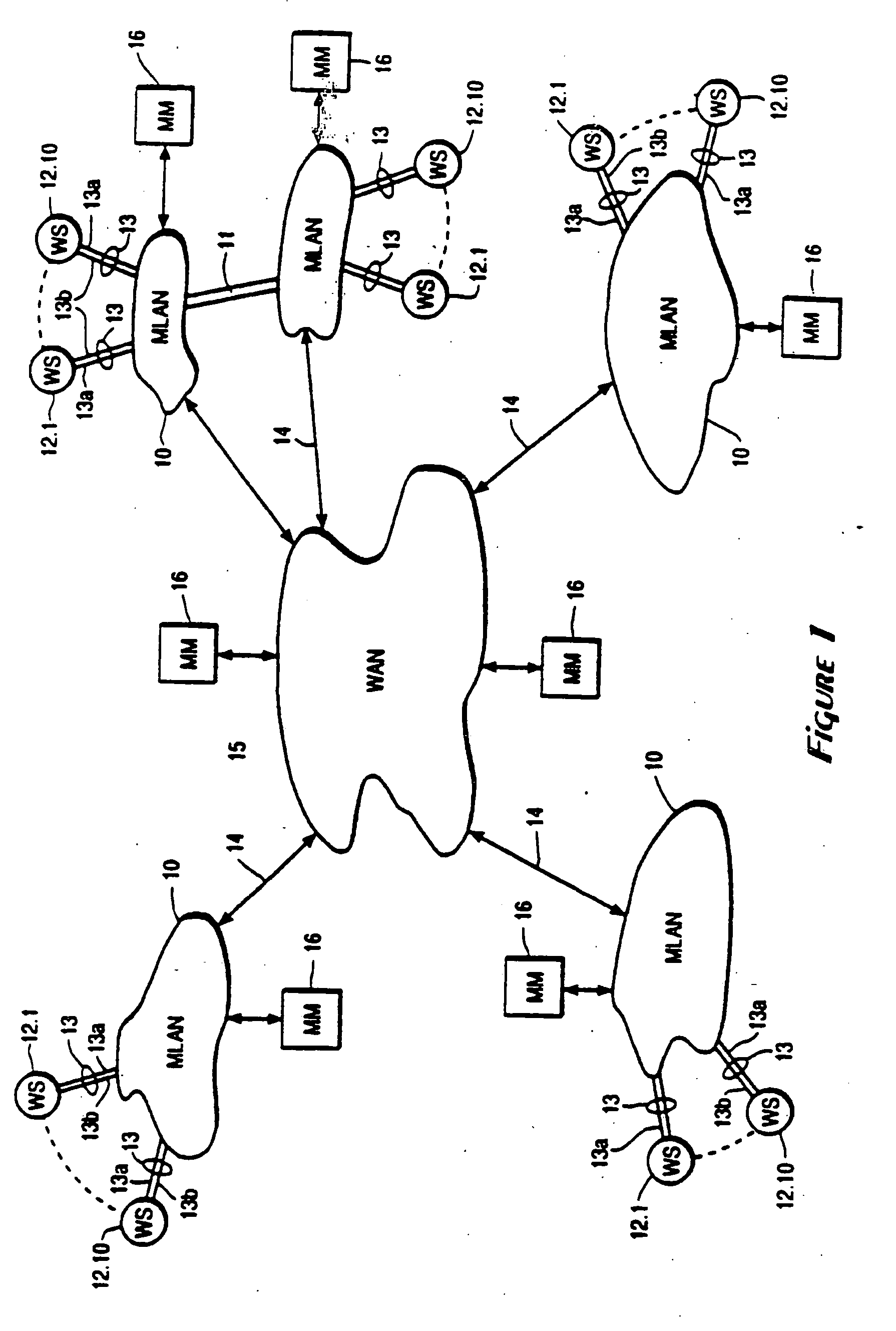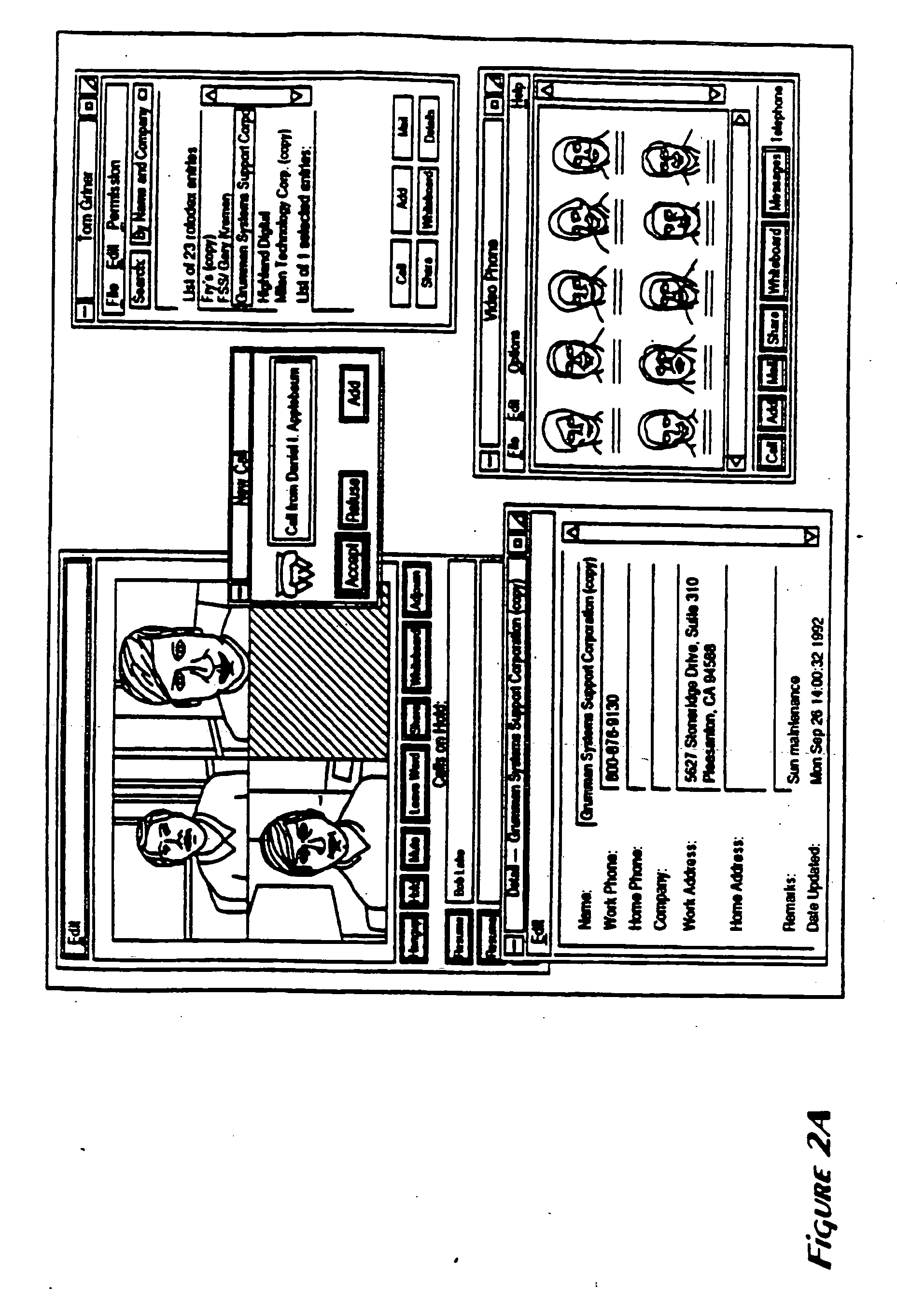Log-in based communications plus two data types
a technology of logging in and data types, applied in the field of computer-based systems, can solve the problems of limited data richness, limited data that can be exchanged, and dedicated videoconferencing systems (and extensions thereof) do not effectively leverage the investment in existing embedded information infrastructures, and achieve the effect of facilitating distributed collaboration
- Summary
- Abstract
- Description
- Claims
- Application Information
AI Technical Summary
Benefits of technology
Problems solved by technology
Method used
Image
Examples
Embodiment Construction
Overall System Architecture
[0051] Referring initially to FIG. 1, illustrated therein is an overall diagrammatic view of a multimedia collaboration system in accordance with the present invention. As shown, each of a plurality of “multimedia local area networks” (MLANs) 10 connects, via lines 13, a plurality of CMWs 12-1 to 12-10 and provides audio / video / data networking for supporting collaboration among CMW users WAN 15 in turn connects multiple MLANs 10, and typically includes appropriate combinations of common carrier analog and digital transmission networks Multiple MLANs 10 on the same physical premises may be connected via bridges / routes 11, as shown, to WANs and one another.
[0052] In accordance with the present invention, the system of FIG. 1 accommodates both “real time” delay and jitter-sensitive signals (e.g., real-time audio and video teleconferencing) and classical asynchronous data (e.g., data control signals as well as shared textual, graphics and other media) communi...
PUM
 Login to View More
Login to View More Abstract
Description
Claims
Application Information
 Login to View More
Login to View More - R&D
- Intellectual Property
- Life Sciences
- Materials
- Tech Scout
- Unparalleled Data Quality
- Higher Quality Content
- 60% Fewer Hallucinations
Browse by: Latest US Patents, China's latest patents, Technical Efficacy Thesaurus, Application Domain, Technology Topic, Popular Technical Reports.
© 2025 PatSnap. All rights reserved.Legal|Privacy policy|Modern Slavery Act Transparency Statement|Sitemap|About US| Contact US: help@patsnap.com



